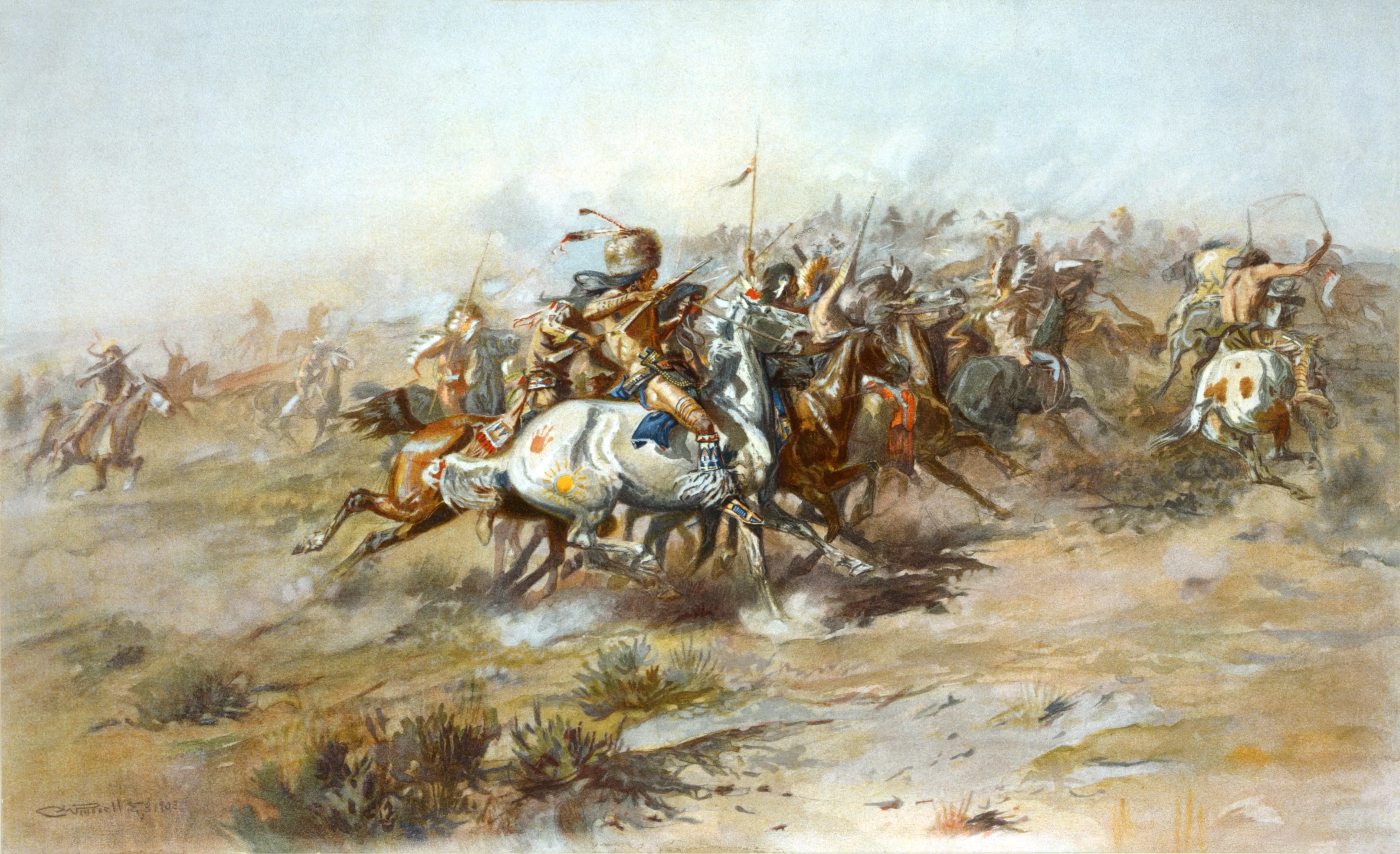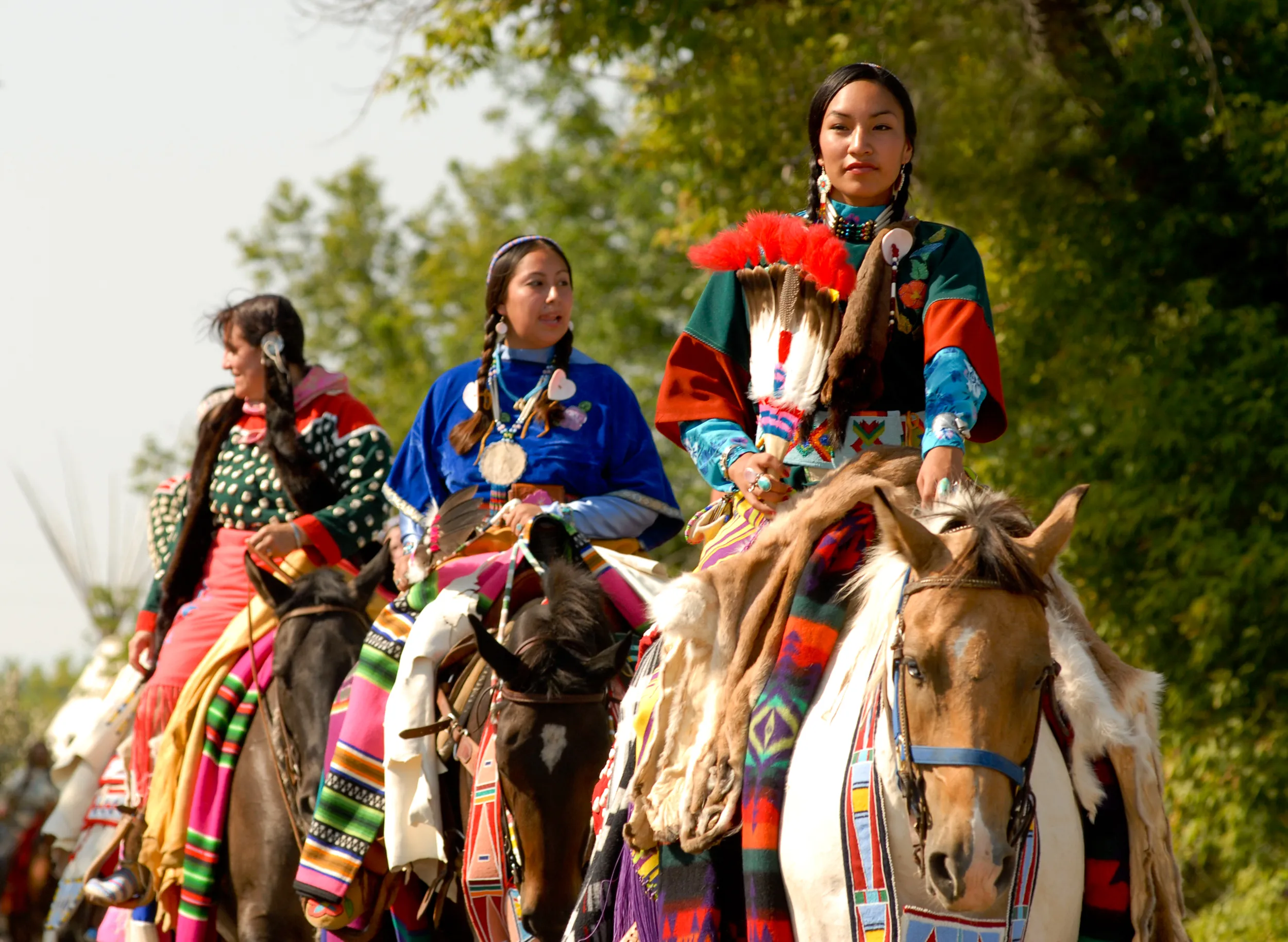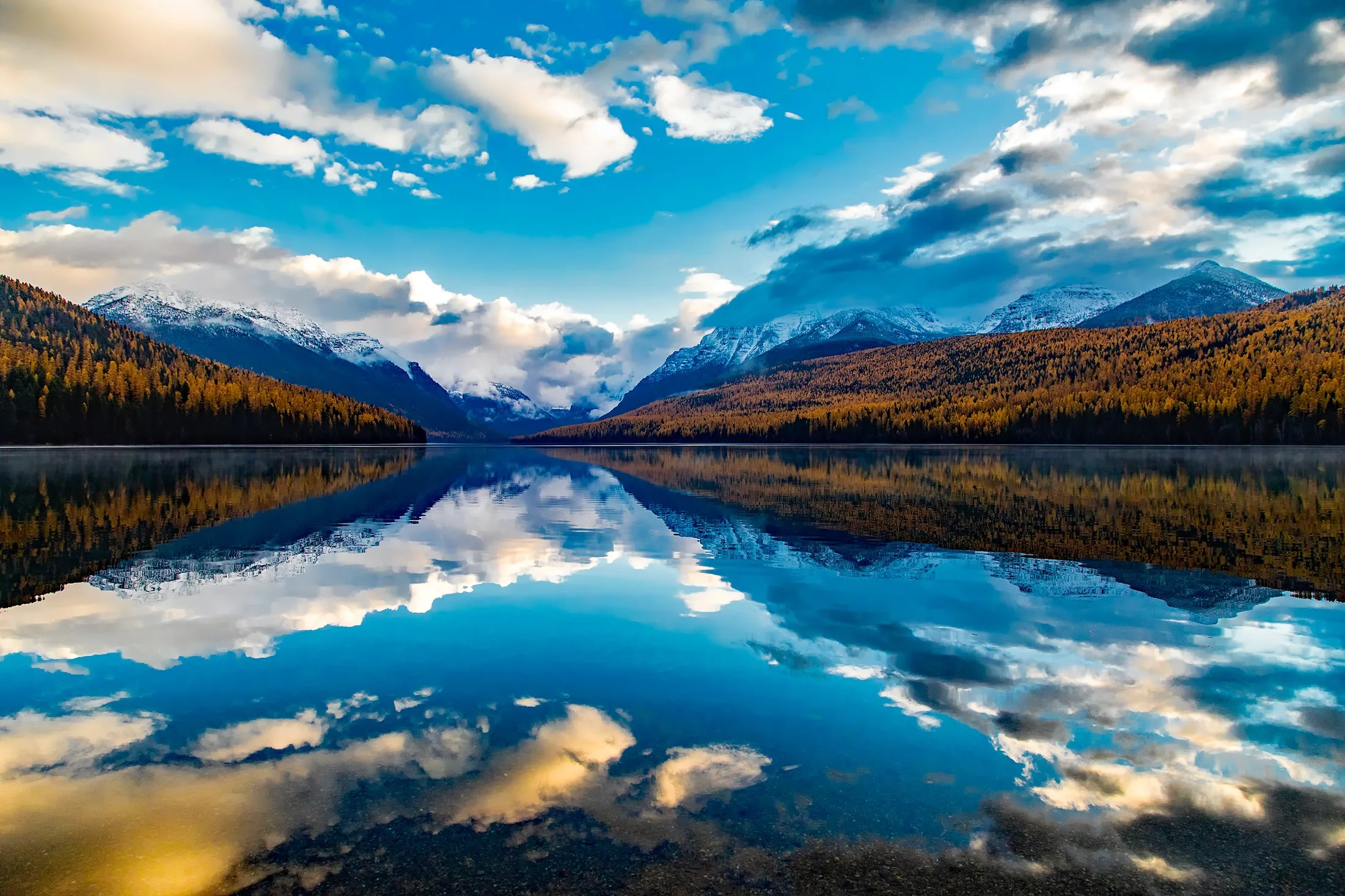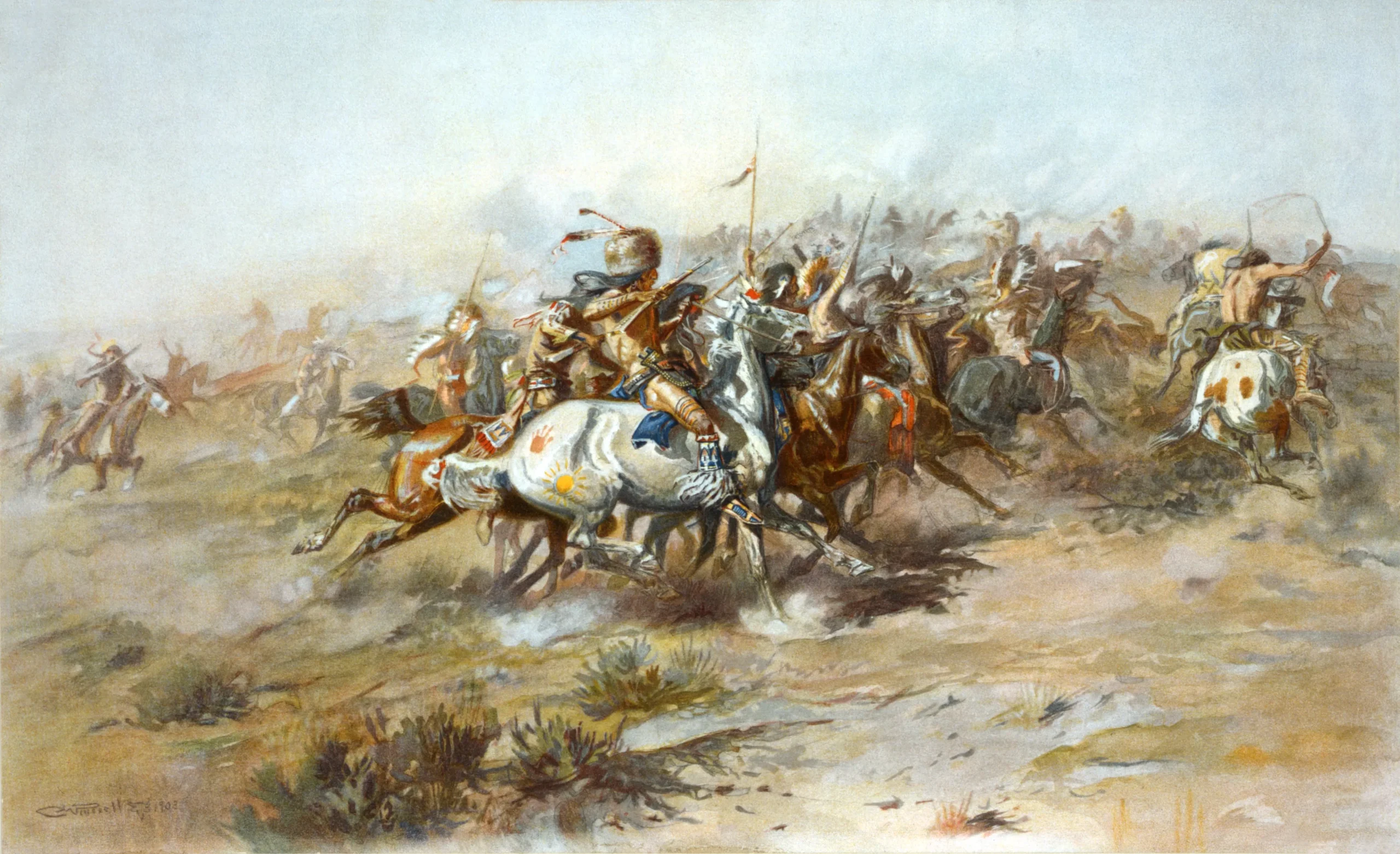Montana, beyond its majestic natural beauty and nicknames like “Treasure State” or “Big Sky Country,” is a land deeply rooted in the history of Native American tribes. From battlefields echoing with the past to museums preserving rich cultural heritage, Montana offers visitors a profound opportunity to explore the lives, traditions, and historical imprints of Native Americans. A journey through Montana is incomplete without experiencing these unique historical sites, where past and present intersect, narrating stories of resilience, identity, and the deep connection between people and the land.
Little Bighorn Battlefield – A poignant testament to history
The Little Bighorn Battlefield, also known as Custer Battlefield, is a national historic site bearing the poignant mark of the conflict between the U.S. Army and the allied Lakota, Cheyenne, and Arapaho tribes in 1876. The Battle of Little Bighorn was not only a significant military event but also a symbol of Native American resistance to protect their lands and culture against white encroachment.
Today, visiting the Little Bighorn Battlefield National Monument, you step into a serene space where rolling hills and the gently flowing Little Bighorn River stand as silent witnesses to historical events. Here, white headstones mark the fallen positions of soldiers from the 7th Cavalry Regiment under General George Armstrong Custer, while atop Last Stand Hill, the Custer Monument solemnly commemorates the soldiers who perished.

However, the Little Bighorn Battlefield is not solely a memorial to American soldiers. In 1991, the U.S. Congress renamed the site to Little Bighorn Battlefield National Monument and authorized the construction of the Indian Memorial to honor the Native American warriors who fought and died here. The Indian Memorial, featuring sculptures and informational panels, tells the story of the battle from the Native American perspective, helping visitors gain a deeper understanding of the causes, events, and significance of the Battle of Little Bighorn for Native American history and culture.
When exploring the Little Bighorn Battlefield, visitors can walk along nature trails, listen to the wind whispering through the grasses, and envision a tumultuous period of history. The Visitor Center offers exhibits, artifacts, and documentaries, providing insights into the battle, General Custer, Native American leaders like Sitting Bull and Crazy Horse, and the lives of Native Americans on the vast plains before the arrival of white settlers.
The Little Bighorn Battlefield is not just a historical tourist destination; it is a space for remembrance, reflection, and learning. It reminds us of past conflicts, cultural diversity, and the importance of mutual respect and understanding among peoples.
Museum of the Plains Indian – Discovering unique indigenous culture
To delve deeper into the culture and history of Native Americans in Montana, the Museum of the Plains Indian is an unmissable destination. Located in Browning, Montana, at the heart of the Blackfeet Reservation, this museum showcases and preserves a rich collection of art and cultural artifacts from the Northern Plains Indian tribes, including Blackfeet, Crow, Cheyenne, Sioux, Assiniboine, Arapaho, and many others.
The Museum of the Plains Indian was established in 1941 with the aim of presenting and honoring the traditional art and culture of Native Americans. Here, visitors can admire unique collections of clothing, jewelry, weapons, household items, musical instruments, and other artworks, reflecting the rich material and spiritual lives of Native Americans across generations.

One of the museum’s highlights is its collection of elaborately decorated leather garments, showcasing the skilled craftsmanship and refined aesthetic sense of Native Americans. Robes, dresses, moccasins, and hats meticulously embroidered with beads, feathers, porcupine quills, and other natural materials tell stories of social status, war achievements, and the wearer’s spiritual beliefs.
In addition to clothing, the museum also displays various ceremonial and religious objects, such as pipes, masks, amulets, and items related to life cycle rituals, seasonal ceremonies, and healing practices. These artifacts reveal the profound spiritual world of Native Americans, with their reverence for nature, belief in supernatural powers, and deep connection between humanity and the cosmos.
The Museum of the Plains Indian is not only a place for preserving and exhibiting artifacts but also a vibrant cultural center. The museum regularly hosts educational programs, workshops, art demonstrations, and cultural events, providing opportunities for visitors to interact directly with Native American culture and learn about contemporary issues facing Native American communities.
Makoshika State Park – Where natural and cultural history converge
Makoshika State Park, Montana’s largest state park, is not only renowned for its magnificent natural landscapes and diverse ecosystems but also a significant archaeological site, preserving traces of both prehistoric dinosaurs and ancient Native Americans. The name “Makoshika” originates from the Lakota language, meaning “bad land” or “land of bad spirits,” reflecting the park’s characteristic terrain of sandstone formations, canyons, and eroded badlands.
Within Makoshika State Park, paleontologists have discovered numerous dinosaur fossils dating back millions of years, including fossils of the famous Tyrannosaurus Rex. These discoveries have made Makoshika a captivating destination for dinosaur enthusiasts and paleontology lovers.
However, Makoshika’s history extends beyond the Jurassic period. Archaeological evidence indicates that this area was also inhabited by Native Americans thousands of years ago. Archaeologists have unearthed numerous Native American artifacts, including stone tools, pottery, and traces of settlements, demonstrating the long-standing connection between humans and the Makoshika land.
When visiting Makoshika State Park, visitors can combine exploring natural and cultural history. The park’s Visitor Center showcases dinosaur fossils and archaeological artifacts, providing information about the area’s geological and cultural history. Visitors can also participate in hiking tours, camping, birdwatching, and enjoy the raw beauty of the badlands landscape.
Makoshika is a prime example of the intersection between natural and cultural history. This place is not just a “bad land” in terms of terrain but also a “rich land” in terms of history and heritage, offering visitors diverse and meaningful exploration experiences.
Glacier and Yellowstone National Parks – Cultural imprints in majestic landscapes
Both Glacier National Park and Yellowstone National Park, Montana’s crown jewels, are not only famous for their breathtaking natural beauty but also hold deep cultural imprints of Native Americans. For thousands of years, Native American tribes such as Blackfeet, Salish, Kootenai, Crow, and Shoshone have lived, hunted, and utilized resources in the areas that are now these two national parks.
Glacier National Park, with its perpetually snow-capped mountains, pristine lakes, and primeval forests, was once home to the Salish and Kootenai tribes. They considered this land sacred and deeply connected to nature. Many place names in the park, such as Lake McDonald and Flathead River, still bear names from the Salish and Kootenai languages.

In Yellowstone National Park, the world’s first national park, Native American tribes have lived and utilized geothermal resources for thousands of years. They regarded hot springs, geysers, and mud pots as gifts from nature, using them for medicinal purposes, cooking, and ceremonies. Archaeological sites in Yellowstone reveal human presence dating back over 11,000 years.
Today, when visiting Glacier and Yellowstone National Parks, visitors can learn about Native American history and culture through interpretive programs, information panels, and interactive activities at visitor centers. Visitors can also visit nearby reservations to learn more about the contemporary lives and cultures of Native Americans.
Exploring Native American historical sites in Montana is not just a tourist journey but also an opportunity to learn about a significant part of American history and culture. It is a journey of discovering cultural diversity, human resilience, and the deep connection between people and nature. Come to Montana and open your heart to hear stories from the past, and cherish the precious cultural heritage that Native Americans have left for the world.
Conclusion
Montana, the “Treasure State,” holds invaluable historical and cultural treasures of Native Americans. From the Little Bighorn Battlefield to the Museum of the Plains Indian, from Makoshika State Park to Glacier and Yellowstone National Parks, each site tells a unique story, contributing to the overall picture of the rich history and culture of Native Americans in Montana.
A journey to explore these historical sites not only provides visitors with new knowledge and unique experiences but also an opportunity to reflect on the past, appreciate the present, and look towards the future with mutual respect and understanding among cultures. Come to Montana, explore the historical sites of Native Americans, and feel the intersection of past and present, nature and culture, for a meaningful and memorable travel experience.
